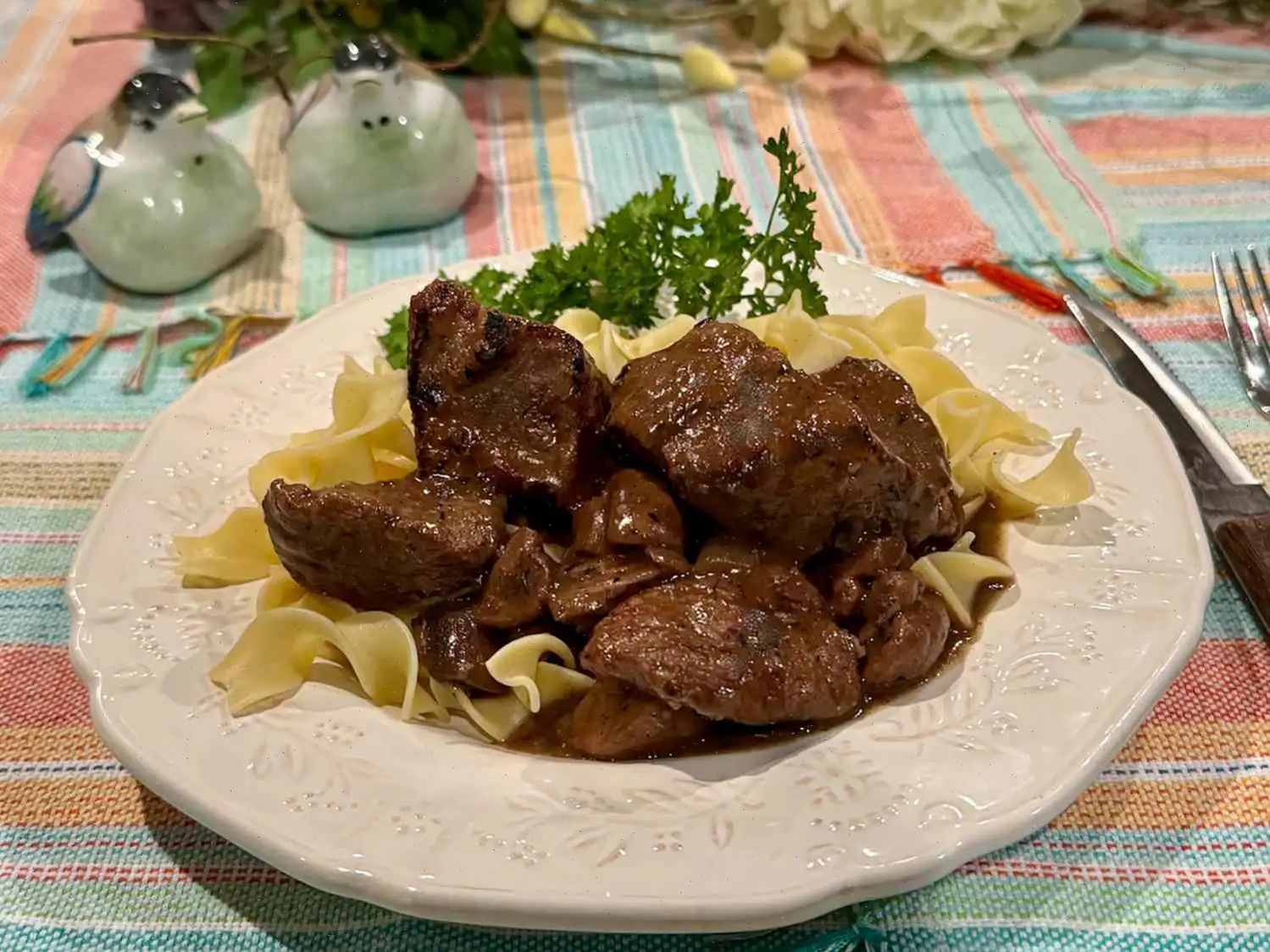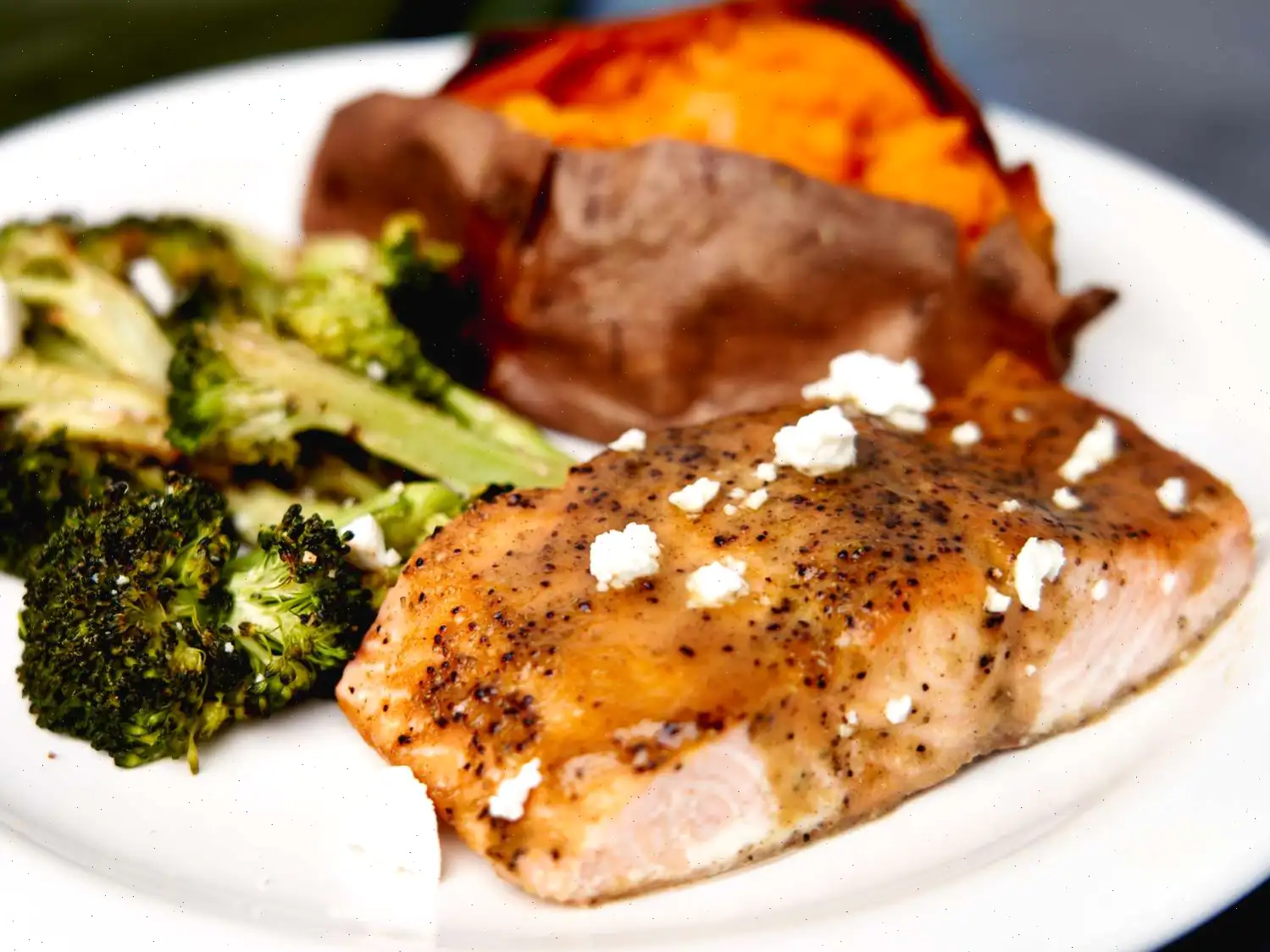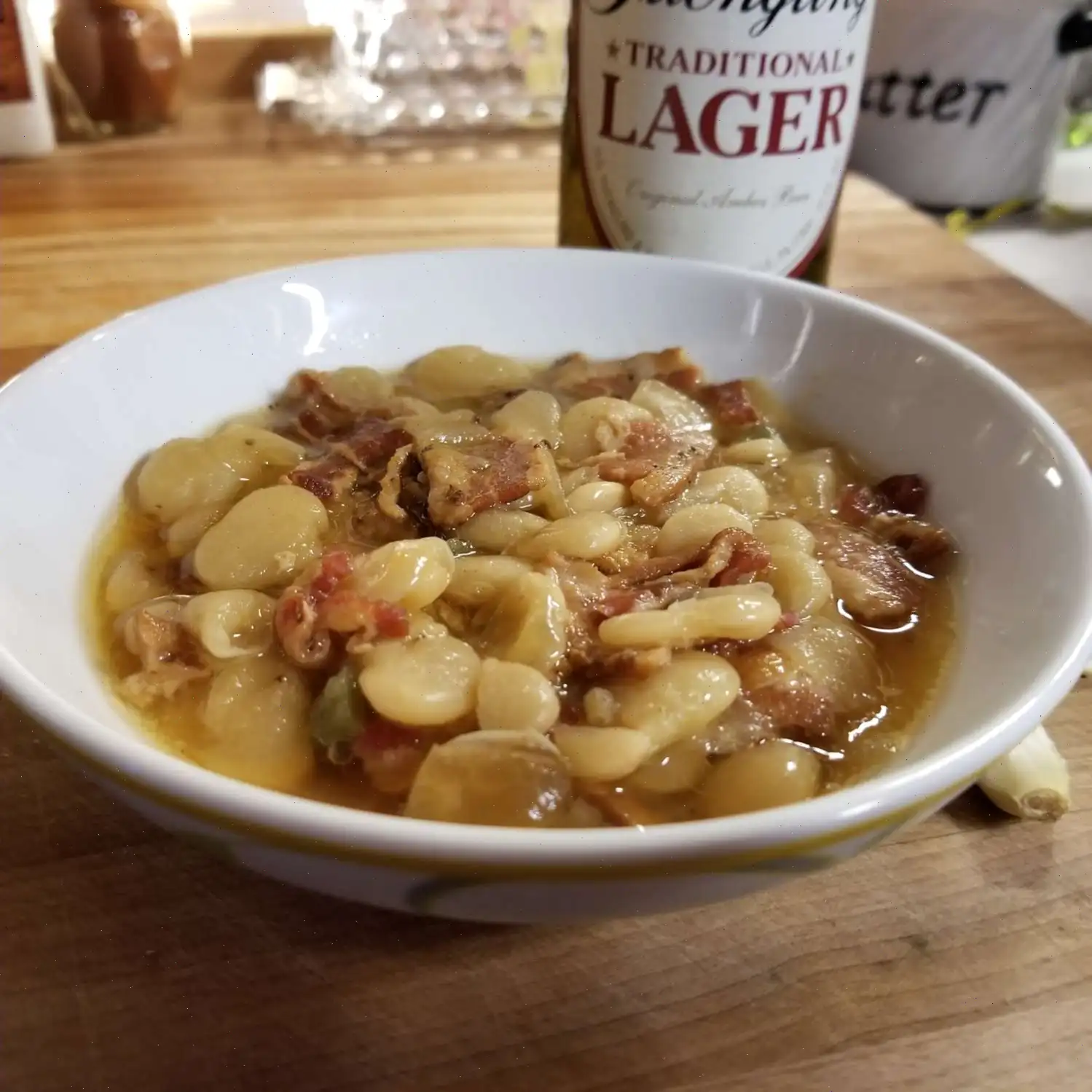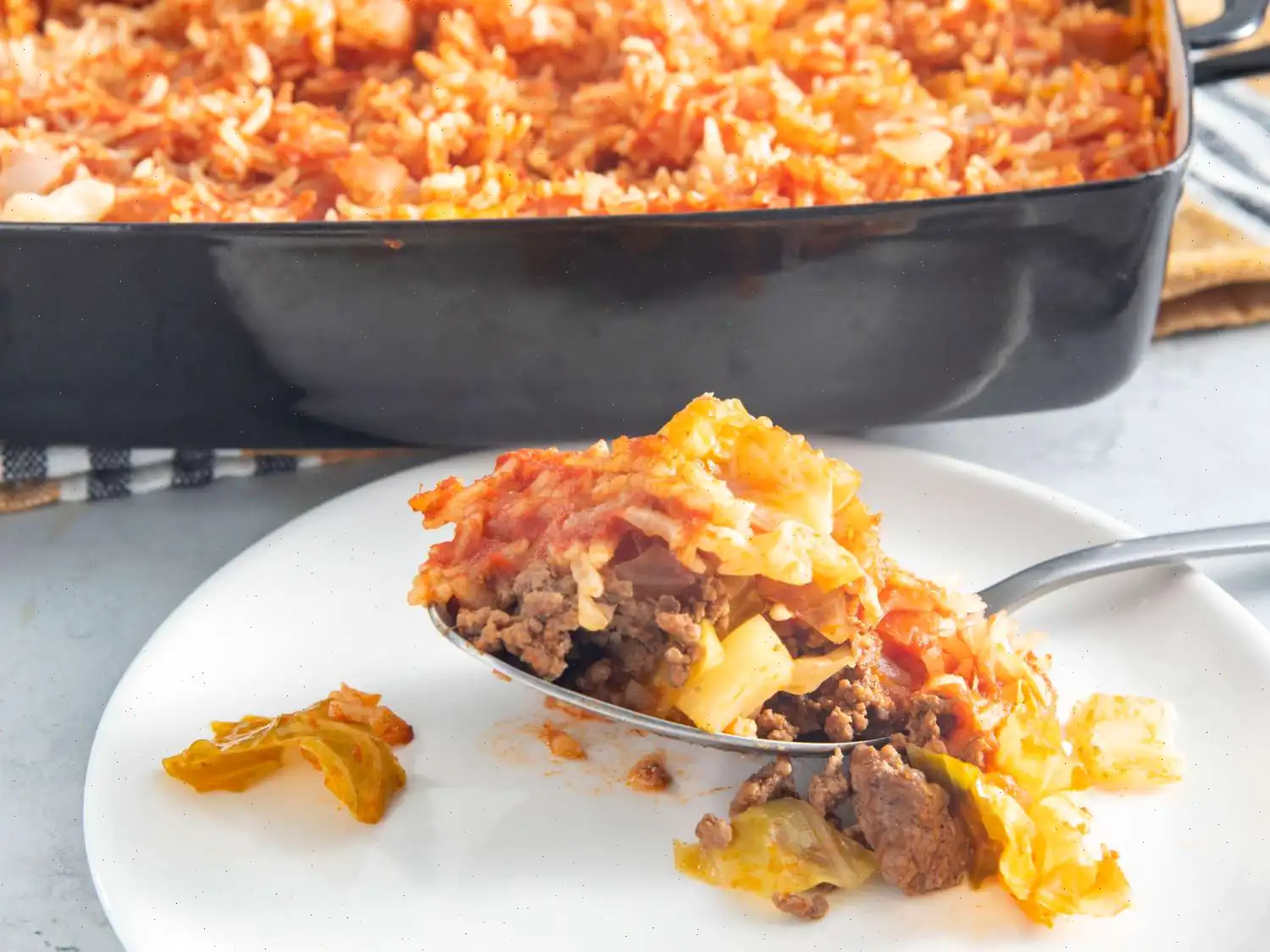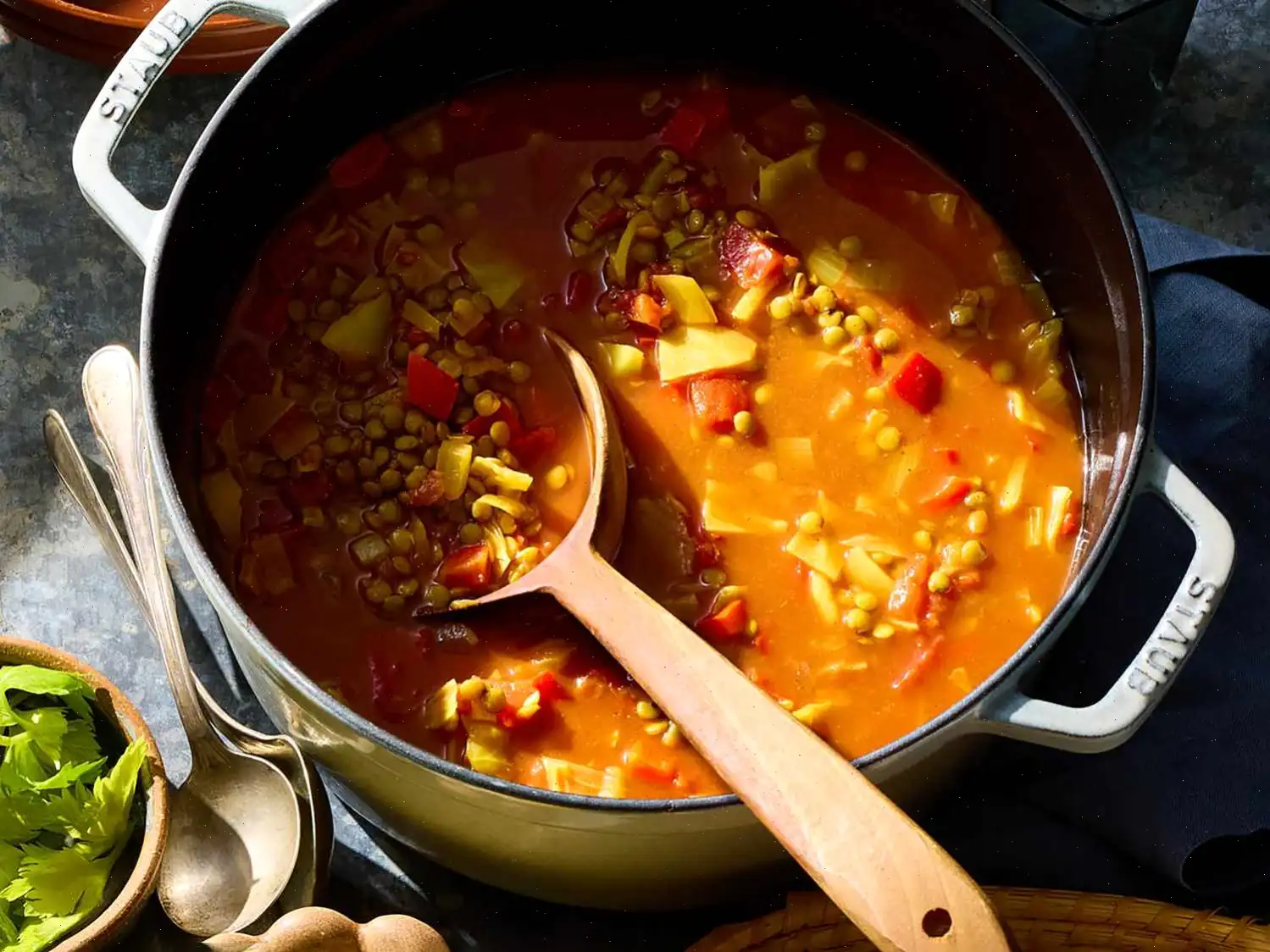
Red Wine Braised Beef Tips Recipe
Beef Tips Recipe
Ingredients
- 3 pounds beef tips (see note below)
- 1 1/2 teaspoons salt, or to taste
- 1 teaspoon freshly ground black pepper, or to taste
- 2 tablespoons vegetable oil
- 1 large onion, diced
- 12 ounces mushrooms, cleaned and quartered
- 4 cloves garlic, roughly chopped
- 1 teaspoon dried thyme
- 1 cup red wine
- 1 cup beef broth
- 1 tablespoon Worcestershire sauce
- 1/4 cup all-purpose flour
Directions
- Preheat the oven to 325F (165C). Season the beef tips with salt and black pepper.
- Heat a Dutch oven over medium-high heat and add the vegetable oil. Brown the beef tips on all sides, about 3 to 5 minutes. Once browned, remove the beef tips from the pot and set them aside, keeping them warm.
- Reduce the heat to medium and add the diced onion and mushrooms to the pot. Cook, stirring constantly, until the vegetables soften, about 2 to 3 minutes.
- Stir in the garlic and thyme, then pour in the red wine. Scrape the bottom of the pot to loosen any browned bits. Bring the mixture to a boil.
- Add the beef broth and Worcestershire sauce to the pot. Taste and adjust the seasoning if necessary. Return the browned beef tips and any juices to the pot.
- Cover the pot with a lid and transfer it to the preheated oven. Let the beef cook until it is fork-tender, about 1 1/2 to 2 hours.
- Remove the beef and mushrooms from the braising liquid using a slotted spoon and set aside.
- Make the gravy: In a small bowl, combine the flour with about 1/2 cup of water. Whisk until smooth, with no lumps. Gradually whisk in about 1/2 cup of the braising liquid from the pot.
- Whisk the flour mixture into the braising liquid in the Dutch oven. Place the pot over medium heat, stirring constantly, until the mixture comes to a boil. Continue to cook and whisk until the sauce thickens, about 3 minutes, and the bubbles collapse and form bullseye patterns.
- Return the beef and mushrooms to the pot, stir to combine, and heat through before serving.
Cook's Note
When buying beef tips, ask your butcher for advice on which cut is best for braising. Some butchers use chuck, round, tri-tip, or sirloin for beef tips. For tri-tip or sirloin, check for tenderness after 1 hour or 90 minutes of braising. Beef tips from chuck or arm cuts require longer cooking times. If the beef is cut into smaller pieces, it may cook more quickly, so adjust the size of the pieces accordingly.
Nutrition Facts (per serving)
| Calories | 299 |
| Total Fat | 13g (17%) |
| Saturated Fat | 3g (14%) |
| Cholesterol | 79mg (26%) |
| Sodium | 1296mg (56%) |
| Total Carbohydrate | 13g (5%) |
| Dietary Fiber | 2g (6%) |
| Total Sugars | 3g |
| Protein | 29g (58%) |
| Vitamin C | 5mg (5%) |
| Calcium | 48mg (4%) |
| Iron | 4mg (24%) |
| Potassium | 604mg (13%) |
* Percent Daily Values are based on a 2,000 calorie diet. Your daily values may be higher or lower depending on your calorie needs. Nutrient information is based on available data and may not be complete for all ingredients.
The History and Cultural Background of Red Wine Braised Beef Tips
Red wine braised beef tips have a rich culinary heritage that traces back to traditional European braising techniques. Braising, a method of slow-cooking meat in liquid, has been used for centuries in French and Italian cuisine, where tougher cuts of beef were transformed into tender, flavorful dishes. The combination of beef and red wine became particularly popular in France, where the alcohol and acidity of wine help break down the collagen in the meat, creating a velvety sauce that coats every bite. Over time, this method crossed the Atlantic and adapted to American tastes, integrating local ingredients such as mushrooms, onions, and Worcestershire sauce.
Regional Variations
In the United States, red wine braised beef tips have distinct regional interpretations. In the Northeast, chefs often emphasize a richer, buttery sauce with herbs like thyme and rosemary, whereas in the Midwest, the dish is commonly served over egg noodles or mashed potatoes for a comforting, home-style meal. The Southern U.S. sometimes incorporates stronger spices or smoked ingredients, giving the dish a slightly bolder flavor. While the core method of braising remains constant, each region adapts the recipe to local palates and available produce.
Distinguishing Characteristics
Unlike beef stews or beef bourguignon, red wine braised beef tips focus on smaller, tender cuts of meat that are quickly seared before slow braising. This results in a dish where the beef retains its individual texture while still absorbing the deep, complex flavors of the braising liquid. The sauce, thickened with a small amount of flour or reduction, is smoother and more concentrated compared to the more chunky, hearty textures of traditional stews. The dishs hallmark is its balance of tender meat, rich wine aroma, and an umami-packed sauce.
Typical Serving Contexts
Red wine braised beef tips are versatile and often featured in both casual and formal settings. In American households, it is frequently served over egg noodles, rice, or mashed potatoes to soak up the flavorful sauce. In restaurants, the dish can be presented with roasted vegetables or a light salad for a more sophisticated experience. Holiday dinners, family gatherings, and Sunday suppers are common occasions where this dish shines, offering both comfort and elegance.
Interesting Facts
- The choice of red wine significantly influences the flavor profile; full-bodied wines like Cabernet Sauvignon or Merlot are preferred for their rich depth.
- The dishs slow-braising technique is ideal for cheaper, tougher cuts of beef, demonstrating how culinary methods can elevate humble ingredients.
- Some variations use a splash of cream or Dijon mustard at the end to add an extra layer of richness and tanginess.
- Historically, braised beef recipes were a sign of refined cooking, often prepared in grand European households to tenderize less expensive cuts for large gatherings.
Red wine braised beef tips exemplify how slow cooking, simple ingredients, and regional creativity combine to create a timeless dish appreciated worldwide for its flavor, texture, and comforting qualities.
You can listen to this recipe in AI audio format. Simply click the play button below to listen to the content in a format that suits you best. It’s a great way to absorb information on the go!


